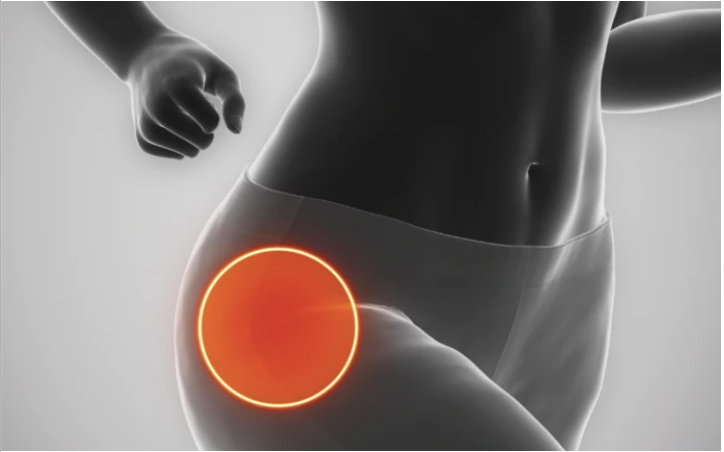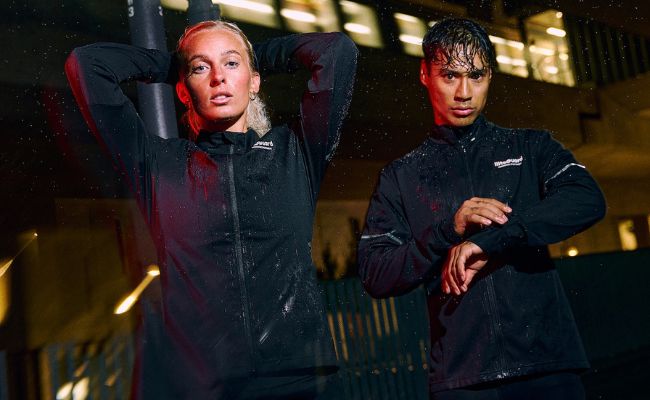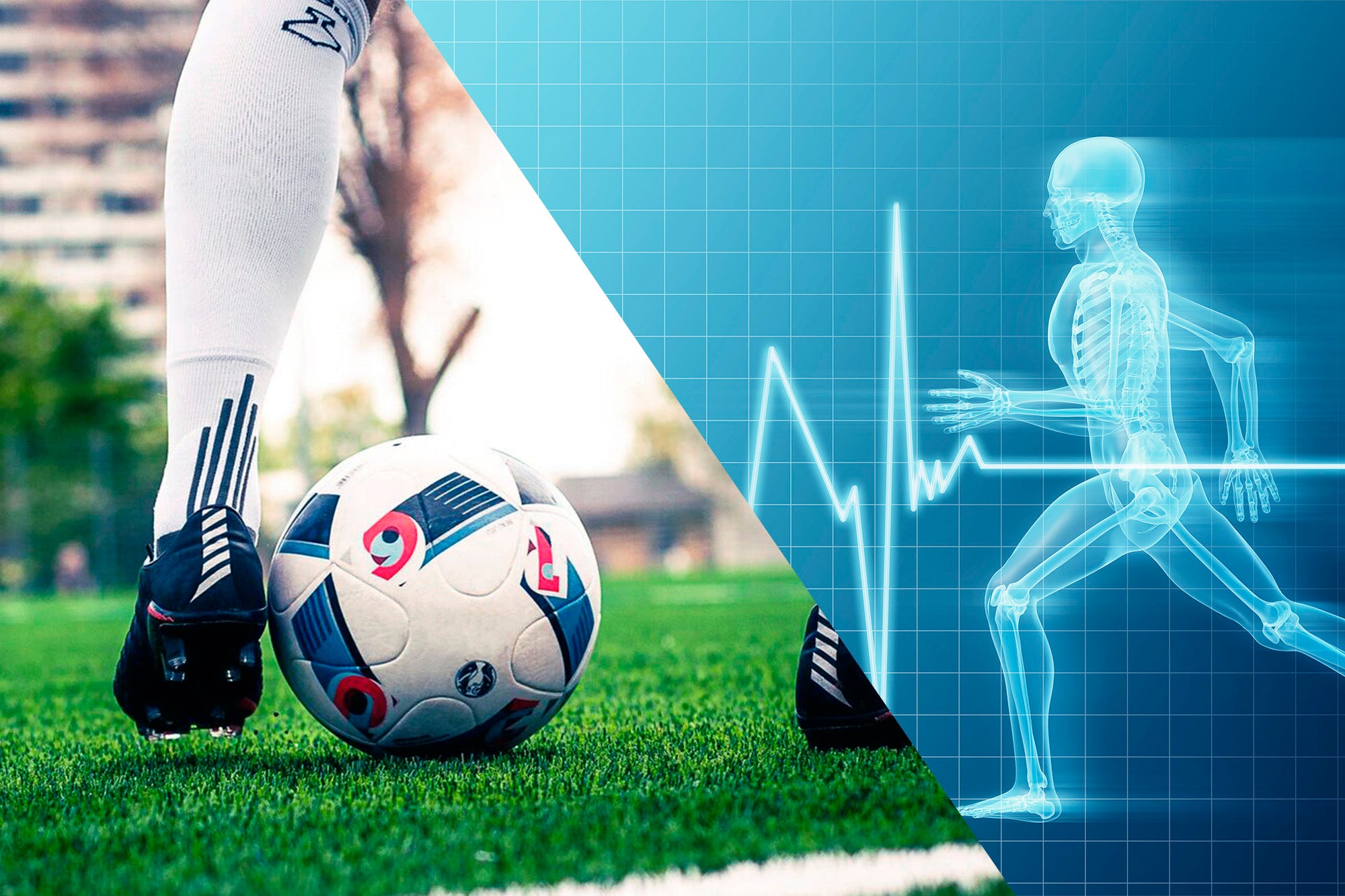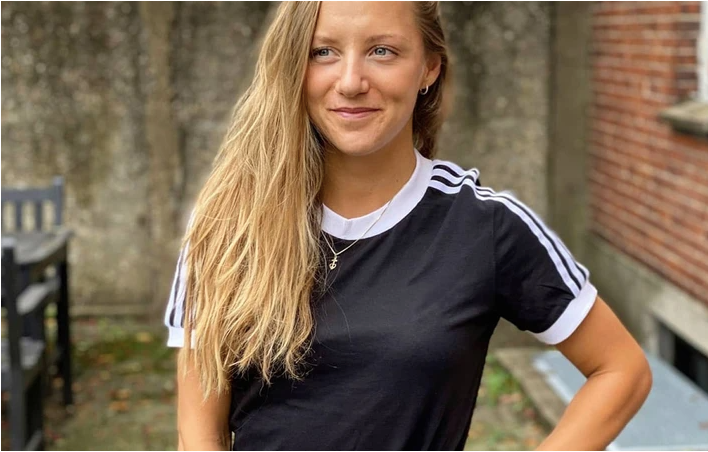
Are you suffering from pain in your hips or knees during or after your run?
Written by physiotherapist: Nicklas Falkesgaard Pedersen
One of the most important areas of the body for runners, are the hip joints. The reason for this is that the hips and pelvis distribute the weight and strain to the legs and thus, the rest of the body. To be able to run therefore requires very high stability and strength in both the hip and pelvic joints.
Are you experiencing pain in your hips and knees during or after your run?
If you are someone who struggles with hip and knee pain during or after a run, you may benefit from knowing more about hip stability. In this blog entry you will learn about your body’s mechanisms and some of the problems that may arise due to lack of stability and what the consequences of this, are.
Why is hip stability so important?
When talking about the body, the term stability is all about how well you are able to withhold the correct position in any given joint. This goes both for when your body is in a resting position, but also when your body is in movement. The correct position is in this case defined as the position where the joint is placed in its naturally intended position, no matter what outer impacts it is exposed to. Stability should not only be looked at as something static, but also a dynamic process where a joint is stable while in movement.
If a joint is not able to hold its natural position, it will cause the other joints to be impacted because of this. The reason for this is that the lack of stability will cause a chain reaction in other joints that have to adjust for this lack of stability.
The importance of muscles for stability around the hips
Your ability to stabilize a joint all comes down to your ability to activate and withhold the correct and necessary tension in the muscles and tendons around the joint.
Every single movement you make happens due to a long list of information your brain collects continuously including before, during and after a given movement. A large number of mechanisms come into play when doing even the most basic tasks such as a taking a single, normal step. Here your brain receives a ton of information from your vision, joints, muscles and tendons to name a few. The brain quickly converts this information into a solution so that you are able to carry out the correct movement. During this action the brain will receive a large amount of feedback which it will use to carry out the movement correctly.

When it comes to stability around a joint, it is therefore affected by a large number of information that has been collected. This information can then finally be used to make sure you use your muscles and tendons to generate the needed tension to stabilise the joint.
The correct information is needed for your ability to perform an action but is also vital for your ability to stabilise. If your brain does not receive the necessary information when making a movement, the ability to stabilize will be reduced.
A great example of this is walking on an uneven surface in the dark, versus in the daylight. In the dark, the brain will not receive the natural inputs from the vision which means that for one you cannot see and thereby adjust for the uneven surface, but it also means that the eyes’ ability to register displacement of the stability is impaired. This causes a reduced stability and balance, that you would not experience if you were walking on the same surface in daylight.
For a healthy and normally functioning person, there may be other factors that come into play, when looking at the ability to stabilise. Here your muscles play an important role, where their function is to create movement and stability in your body. The muscular control entails the ability to activate the muscles correctly and sufficiently so that they can act as a stabilising help that is needed to stabilise a joint during movement.
The ability to activate the correct muscles at the right time and with the necessary strength is extremely important, for a person to be able to stabilise during movement. The muscular control may be challenged for several reasons and here muscular imbalance around a joint, weak muscles and the lack of ability to activate muscles may be equally large issues in regard to muscular control.
Muscle activity is a voluntary and intentional act which we can control, but typically we are not aware of how we activate our muscles. Often the ability to activate the muscles will be dependant how versed we are in the activity and thereby habitual movements are easier for us to perform.
A great example of this is kicking a ball. Here you may have a preferred leg you use when kicking. This will mean that this leg will spontaneously become the leg you use for kicking and the other for standing on. You will most likely kick greater power and precision with your preferred leg, while the task becomes a lot harder with the opposite leg. This is most definitely not news to you, but what about the balance on other leg? How is your balance if you compare your ‘good’ your ‘bad’ kicking leg?
Most likely, you will notice that your ability to stand on one leg is far better on your ’bad’ kicking leg, than you your good leg that can generate power and precision. The reason for this is that your least preferred kicking leg is more used to stabilising you when you kick, rather than creating a powerful kick. Your leg is thereby trained and accustomed to hold your body weight and balance when you kick a ball.
The link between weak muscles and lack of muscular control/ stability
For this section we will be looking at one of the most common issues when it comes to stability around the hip area; lack of strength and the ability to sufficiently activate the gluteal muscles.

There are a large number of muscles surrounding the hip which ensures that the hips is both able to move and be stabilized. All muscles have a function regarding movements but also, and just as important, in regard to stability.
Gluteus Maximus and Gluteus Medius are two important muscles surrounding the hip that make up the largest part of the superficial gluteal muscles.
Gluteus Max is the largest gluteal muscle and is in fact the largest muscle in the entire body. This muscles’ primary function in movement, is to stretch the hip and guide the leg backwards. It is therefore the primary driver in collaboration with the hamstring muscles, when you are placing your leg backward when walking and running.
Gluteus Medius is a smaller muscle that is placed on the sides of the hips. Its primary function is to guide the leg to the side. As it goes for all other muscles, these two gluteal muscles assist other movements, as well as do their part in ensuring stability.
When it comes to stability, gluteus medius is an important muscle as its placement plays a large role in stabilizing the pelvis and thereby also the hip when doing leg work, that is when you weight is on one leg.
It may be rare that you are required to solely hold your balance/ stability on one leg for a longer period of time. However, you perform thousands of movements every single day where the weight is solely on one leg.
When you take a regular step when walking, you actually have your weight on only one leg 80% of the movement of taking a step. If you are running however, your weight is on one leg for 100% of the movement.
This happens when you are guiding your leg forward to a step, where you in terms of the percentage, have your weight on one leg for quite a long time. Therefore, it is essential that your Gluteus Medius functions correctly to stabilise you hip. For this reason, you are dependent on your gluteus medius on thousands of occasions, every single day, for every step you take.
When you are walking or running you must be able to activate your gluteus medius on your standing leg, to ensure that you can hold your pelvis and hips stable. The function of the gluteus medius is not to place your leg to the side, which is primary movement, but instead to stabilise the pelvis and prevent the hip falling out to the side, and your legs falling in. It should therefore be able to activate and have a firm grip so that the pelvis and hips is kept stable.
On the picture below you can see the difference on the hip placements with and without activated gluteus medius.
A. Showcases what it looks like when gluteus medius is doing its work correctly
B. Showcases what it looks like when gluteus medius is not doing its work correctly

When the gluteus medius is not doing its job correctly, it causes instability around the pelvis as illustrated with the horizontal line on the photo. At exhibit B it is clear how this line has a substantial slope where the pelvis is not supported and therefore falls down towards the leg that is moving, and at the same time the hip falls more to the side on the opposite leg.
Your gluteus medius is inferior to its bigger brother gluteus maximus in both size and ability to generate power, however it is extremely important to ensuring good stability.
What can poor/ bad hip stability lead to?
The lack of stability around the pelvis and hips can change your body’s movement patterns to solve a task- for example when walking or particularly running. Naturally mechanisms in your body ensures that you are able to carry out a given movement/ strain in spite of the lack of hip stability.
A typical movement pattern with lack of stability around the hip is that your hip rotates inward and the hip is pushed to the side when the weight is put on the leg. At the same time, your tight bone falls inward and causes your knee and feet to the same.
This typical mechanism happens to ensure that the body can do the task of having your weight on one leg without losing your balance. The rest of the body therefore adapts to the lack of stability.
Seen in isolation, this is quite a clever mechanism but over time it may cause injuries on your muscles, tendons and joints since these are all working in an undesired way.
The risk of injury due to the lack of stability will especially be present if you strain your body more than what it is used to for example with longer walks or runs or if you suddenly increase your load in weight training.
Many injuries that occur when running is caused by excessive load on the body, and this strain can easily arise due to lack of stability which results in the tendons becoming over loaded, due to a combination of lack of strength and increased amount of training.
Typical injuries that can be related to lack of stability around the hip and pelvis
|
Lower back pain Most often in the opposite side of the instable hip where the musculature attempts to right the misalignment in the pelvis and therefore becomes strained. |
Hip pain Typically, around the tendon attachment on the thighbone. Can be due to an infected bursa.
|
|
Shin pain Tibial stress syndrome due to increased strain on the muscles on the inside of the calf as a reaction to increased pronation. |
Achilles and arch tendon pain Inflammation in the Achilles or arch tendon due to increased pronation (the foot falls inward) |
|
Knee pain Runner’s knee, where the pain is focused on the tendon surrounding the outer side of the knee. The pain can also be located on the inside of the knee where the tissue is stretched and strained upon landing. |
Glute pain For example, Piriformis syndrome where a muscle puts pressure on a nerve. |
Hip stability and Liiteguard

Liiteguard’s new GLU-tech tights all have a special built in elastic on the buttocks and side of the hips. This elastic covers parts of the gluteus maximus and the gluteus medius and the purpose of this tight elastic is to stabilise the hip during activity that evolves putting weight on one leg at a time.
This happens partly via the supportive function of the elastic but also via the local pressure applied on the muscles. The idea behind this pressure is to ensure that the muscles are constantly reminded of working actively. When you land on one leg, the purpose is to make sure the brain is aware of the muscles and thereby easier to active it.
Liiteguards GLU-tech is therefore specifically developed and designed to help you avoid common pains and injuries that you may get when lacking stability around the hip.
GLU-tech
- International patent pending hip stabilising technology
- Sweat transporting material ensuring the optimal body temperature
- Flat seams and fleece pad in crotch area to ensure chafing free runs
- Discrete pockets placed further back on each thigh to guarantee full mobility even if you are carrying your phone or protein bar on your run
- Matt carbon reflexes in the front and back so you can be seen even after nightfall
- Four-way stretch to ensure a snug and comfortable fit





Leave a comment
This site is protected by hCaptcha and the hCaptcha Privacy Policy and Terms of Service apply.